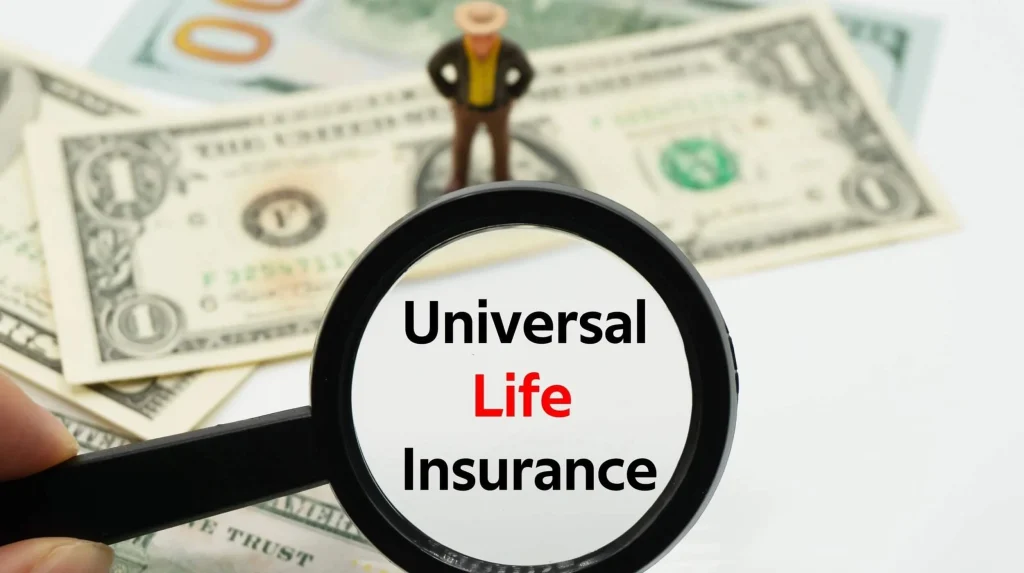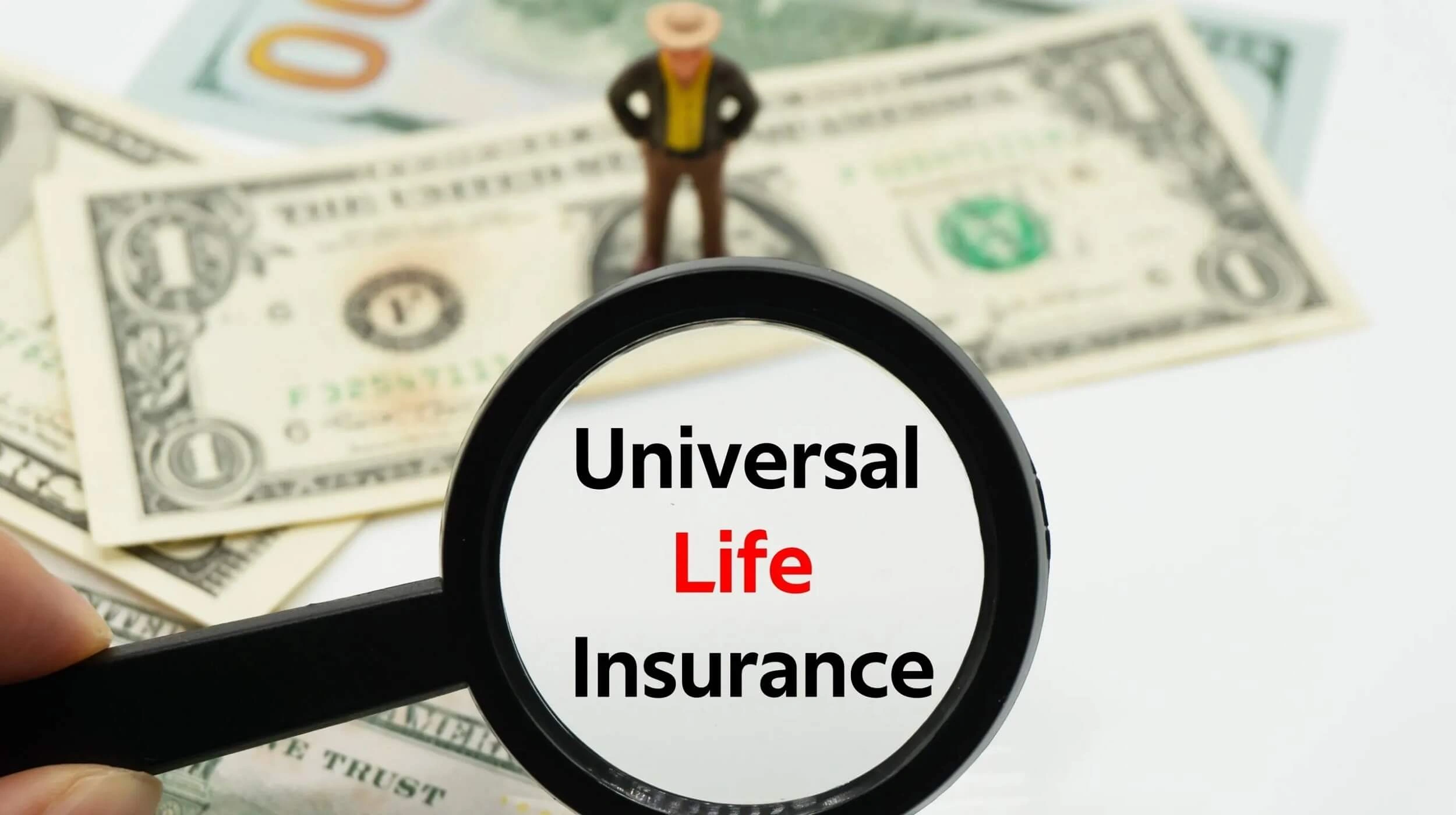Universal life insurance is a flexible permanent life insurance policy that combines lifelong coverage with an investment-like savings component known as cash value. Unlike term policies, which expire after a certain period, universal life insurance is designed to last your entire life—provided you keep up with policy requirements.
It’s ideal for individuals who want to manage their coverage dynamically—adjusting payments, modifying their death benefit, and potentially growing tax-deferred cash value along the way. But the flexibility comes with complexity, and it’s not the right choice for everyone.

Content
How Does a Universal Life Insurance Policy Work?
At its core, a universal life insurance policy includes two major elements:
- Death Benefit – The amount paid to your beneficiaries when you die.
- Cash Value – A savings component that grows over time.
Your premium payments fund both parts. A portion covers the cost of insurance (COI), while the remainder builds cash value, which grows at a rate set by the insurer (often with a guaranteed minimum return). You can borrow from this cash value, use it to pay premiums, or simply allow it to accumulate.
Example:
Imagine you’re 35 years old and buy a $300,000 universal life policy. If you overfund the policy in the early years, your cash value grows. By your 50s, you might have enough built up to cover premiums entirely—while keeping the death benefit intact.
Universal Life Insurance Cash Value
The cash value is one of the most appealing—and misunderstood—features of universal life insurance. It acts like a tax-advantaged savings account, growing at a steady interest rate set by your insurer.
Key Points:
- You can borrow against it or make withdrawals (though withdrawals may reduce your death benefit).
- Growth is tax-deferred, so you don’t pay taxes on the gains while they’re in the policy.
- If you take out loans and don’t repay them, it reduces your policy’s value and may cause it to lapse.
Tip:
Always review your policy’s annual statement. It shows how your cash value is performing, how much is available to withdraw or borrow, and whether you’re on track to keep the policy active.
Universal Life Insurance Premiums
One of the most attractive features of universal life insurance is premium flexibility.
You can:
- Pay higher premiums early to build more cash value.
- Skip or reduce payments later if you’ve built enough value.
- Adjust your premiums as your financial situation changes.
But this flexibility comes with a caveat: If your cash value dips too low to cover the cost of insurance, your policy could lapse. That’s why many policyholders schedule periodic reviews with their insurance advisor.
Universal Life Insurance Death Benefit
The death benefit is the cornerstone of any life insurance policy. With universal life, you can often choose between:
- Level Death Benefit – A fixed amount (e.g., $500,000), regardless of your policy’s cash value.
- Increasing Death Benefit – The base amount plus your accumulated cash value, offering more payout at a higher cost.
Some insurers may even allow custom structures, blending both approaches.
Pro Tip:
Choosing the increasing death benefit option makes sense if you’re focused on legacy planning or have substantial assets to protect from estate taxes.
Universal Life Insurance vs. Whole Life Insurance
These two permanent life insurance products share similarities but serve different needs.
| Feature | Universal Life Insurance | Whole Life Insurance |
| Premiums | Flexible | Fixed |
| Cash Value Growth | Based on interest rates | Guaranteed |
| Investment Control | Limited or indexed options | None |
| Policy Adjustability | Yes (premiums and coverage) | No |
| Ideal For | Flexibility + growth seekers | Simplicity + guarantees |
If you want customization and are comfortable with variability, universal life might suit you. If you prefer predictability, whole life insurance is more straightforward.
Other Types of Universal Life Insurance
There are three common types of universal life policies, each with its own risk profile:
1. Indexed Universal Life (IUL)
- Tied to a stock market index like the S&P 500
- Offers higher growth potential
- Includes downside protection (usually 0% floor)
2. Variable Universal Life (VUL)
- Lets you invest in mutual fund-like subaccounts
- Higher risk, higher potential returns
- Requires active management
3. Guaranteed Universal Life (GUL)
- Lower cash value emphasis
- Fixed death benefit and premiums
- Designed for affordability and simplicity
Who Should Consider Universal Life Insurance?
You might benefit from a universal life policy if:
- You want lifelong coverage with adjustable terms
- You have a long-term financial strategy (e.g., estate planning, tax-advantaged growth)
- You’re a high-income earner seeking additional tax-deferred savings
- You want to supplement retirement income via policy loans
On the other hand, if your goal is simple, affordable protection, term life insurance is likely a better fit.
Final Thoughts
Universal life insurance blends flexibility, lifelong protection, and financial growth potential. But it’s not a “set it and forget it” solution. You’ll need to monitor it regularly, manage cash value performance, and understand how adjustments affect your coverage.
FAQs
Can I lose money with a universal life insurance policy?
Yes—if you withdraw too much cash value, don’t repay loans, or if the policy’s interest rate underperforms, your policy may lose value or lapse.
Is universal life better than term life insurance?
It depends on your needs. Term is cheaper and simpler. Universal life offers lifetime protection and savings potential but costs more and needs active management.

Ryan Myers is a business blog author and writer. He graduated from the University of California, Berkeley in 2009 with a degree in Political Science. His favorite topics to write about are blogging for small businesses and becoming an entrepreneur.

